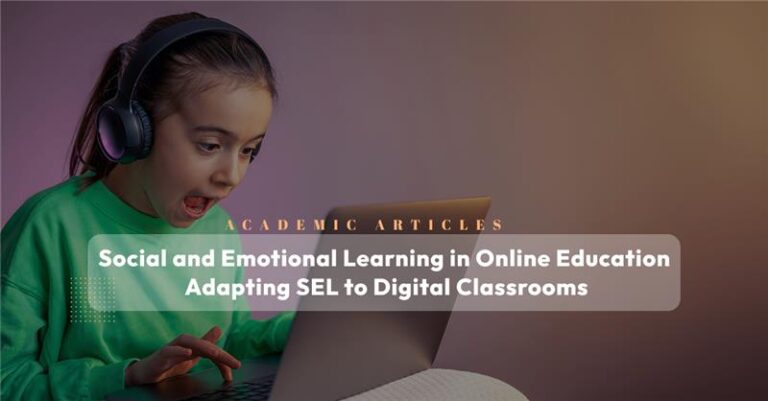Virtual classrooms are known for their flexibility and accessibility. However, that does not come free. There are also unique challenges, particularly in fostering the human connections vital for students’ emotional and social development.
This is where Social and Emotional Learning (SEL) becomes crucial. Adapting SEL to digital classrooms is necessary for holistic education in the 21st century.
What Is Social and Emotional Learning (SEL)?
Social and Emotional Learning (SEL) is the process through which individuals—children and adults alike—acquire and apply the knowledge, skills, and attitudes to:
- Understand and manage emotions.
- Set and achieve positive goals.
- Feel and show empathy for others.
- Establish and maintain positive relationships.
- Make responsible decisions.
Traditionally embedded in face-to-face interactions, SEL has been proven to enhance academic performance, mental well-being, and classroom behavior.
Now, the challenge is to adapt these benefits to digital platforms without losing the human touch.
Why SEL Matters in Online Education

In virtual settings, students may feel isolated, less engaged, or emotionally disconnected. The absence of nonverbal cues, limited peer interaction, and reduced spontaneous communication can hinder their emotional and social development. Without intentional strategies, these gaps can widen over time.
SEL in online classrooms helps:
- Build a sense of community.
- Reduce student anxiety and stress.
- Improve communication and collaboration.
- Support self-regulation and motivation.
- Enhance academic outcomes.
Strategies to Adapt SEL to Online Classrooms
1. Start with Emotional Check-Ins
Simple digital tools like polls, emojis, or Google Forms can allow students to express how they’re feeling before class starts. Teachers can use this data to tailor their tone, pace, and engagement levels, or follow up individually with students in need.
2. Use Breakout Rooms for Collaboration
Breakout rooms simulate small-group interaction, which is essential for practicing empathy, active listening, and teamwork. Structured tasks and roles within each group can ensure every student participates and feels heard.
3. Incorporate Reflective Journaling
Journaling prompts in digital platforms (like Google Docs or Padlet) help students reflect on emotions, goals, and interpersonal experiences. It also fosters self-awareness and responsible decision-making.
4. Teach Digital Citizenship Alongside SEL
Digital citizenship lessons—including kindness in online communication, managing screen time, and understanding digital footprints—naturally align with SEL goals like ethical responsibility and self-management.
5. Model SEL Skills Through Teacher Behavior
Educators set the emotional tone of the online classroom. Being transparent about challenges, showing vulnerability, and practicing active listening all model key SEL competencies.
6. Celebrate Student Growth and Effort
Use badges, virtual shoutouts, or recognition boards to acknowledge not only academic success but also social and emotional milestones like cooperation, perseverance, or kindness.
7. Leverage Multimedia SEL Resources
Videos, interactive games, and digital storytelling platforms can make SEL concepts more engaging and relatable. Tools like Common Sense Education, Second Step Digital, or ClassDojo can provide structured SEL content tailored to different age groups.
Challenges and Considerations
Adapting SEL to virtual spaces isn’t without hurdles. Teachers may feel underprepared or overwhelmed. Students without stable internet or private spaces may struggle with consistent participation. SEL must also be inclusive, culturally responsive, and trauma-informed, especially during times of societal uncertainty.
To mitigate these issues:
- Provide SEL training for educators
- Integrate SEL naturally into academic lessons
- Maintain regular, consistent routines
- Encourage family involvement in reinforcing SEL at home
Final Thoughts
Incorporating Social and Emotional Learning in online education is not about replicating in-person methods; it’s about reimagining SEL for a digital world. When done thoughtfully, SEL in digital classrooms can bridge emotional gaps, nurture well-rounded learners, and create online spaces that are not only educational but deeply human.
Share, Discuss, or Ask
Do you have a child in an online school, or are you considering enrolling your child in one? We’d love to hear about your experiences. Let us know what has been or may be decisive in the dilemma of Traditional vs. Online.
If you have questions, please visit us at EduWW or email [email protected].



